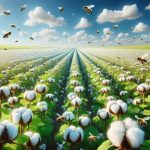Are you curious about whether silk is a sustainable fabric? Look no further! In this article, we will explore the environmental impact of silk production and the ethical considerations in silk farming.
We will compare silk to other sustainable fabrics and discuss the latest innovations in sustainable silk production.
Additionally, we will provide you with helpful tips for choosing and caring for sustainable silk products.
Get ready to dive into the world of silk and discover the truth behind its sustainability.
Table of Contents
Environmental Impact of Silk Production
The environmental impact of silk production can be significant due to the amount of water and energy required in the process. Silk farming challenges arise from the need to cultivate and harvest mulberry leaves, the primary food source for silkworms. This process involves the use of large amounts of water, as the leaves must be constantly irrigated to ensure their growth. Additionally, energy-intensive methods are employed in the silk production process, such as reeling, degumming, and weaving. These steps require machinery and heat, contributing to the overall carbon footprint.
Silk farming also presents challenges in terms of land usage. Mulberry trees require a significant amount of space to grow, which can lead to deforestation if not managed sustainably. Furthermore, the use of pesticides and fertilizers in silk production can have negative impacts on surrounding ecosystems and water sources.
To mitigate these environmental impacts, efforts are being made to promote sustainable silk production. This includes the adoption of organic farming practices, water-saving techniques, and the use of renewable energy sources. Additionally, research is being conducted to develop more efficient and eco-friendly methods for silk production.
Overall, while silk production does have environmental challenges, ongoing efforts to improve sustainability are promising. By implementing these measures, the environmental impact of silk production can be reduced, making it a more sustainable fabric option.
Ethical Considerations in Silk Farming
When it comes to ethical considerations in silk farming, you’ll want to prioritize practices that promote the well-being of the silkworms. Silk farming practices vary greatly, so it’s important to be aware of the different methods used and their impact on animal welfare.
Here are some animal welfare considerations to keep in mind:
-
Silkworm Housing: Look for silk farms that provide spacious and clean housing for silkworms. This ensures that they have enough room to move around and reduces the risk of disease transmission.
-
Feeding: Find farms that use high-quality, organic mulberry leaves as feed. This ensures that the silkworms are receiving proper nutrition without the use of harmful chemicals.
-
Harvesting: Opt for silk farms that use ethical harvesting methods. Some farms allow the silkworms to complete their life cycle and emerge as moths before harvesting the silk, while others use methods that minimize harm to the silkworms.
-
Treatment of Silkworms: Choose farms that prioritize the health and well-being of the silkworms. This includes providing proper temperature and humidity levels, as well as minimizing stress during the silk production process.
Silk Vs. Other Sustainable Fabrics
Opt for alternatives like bamboo or hemp, which are known for their eco-friendly qualities. When comparing silk to other sustainable fabrics, such as hemp and bamboo, there are several key factors to consider.
Silk is a natural fiber derived from the cocoons of silkworms, while hemp and bamboo are plant-based fibers. Silk production involves the killing of silkworms during the harvesting process, which raises ethical concerns. On the other hand, hemp and bamboo can be grown without harming animals, making them more animal-friendly options.
In terms of environmental impact, silk production requires large amounts of water and energy, as well as the use of pesticides and chemicals. In contrast, both hemp and bamboo are known for their low environmental footprint. Hemp is a highly sustainable crop that requires little water and no pesticides, making it an ideal choice for eco-conscious consumers. Bamboo, on the other hand, is a fast-growing plant that requires no pesticides or fertilizers and can be harvested sustainably. Additionally, bamboo has natural antibacterial properties and is biodegradable, making it a popular choice for sustainable fashion.
Overall, when comparing silk to alternatives like hemp and bamboo, it is clear that these plant-based fibers offer more eco-friendly qualities. From ethical considerations to environmental impact, opting for hemp or bamboo can be a more sustainable choice for conscious consumers.
Innovations in Sustainable Silk Production
Innovations in sustainable silk production have led to the development of more ethical and environmentally-friendly methods. As the demand for silk continues to rise, researchers and textile manufacturers are exploring alternative methods to reduce the environmental impact of silk production.
One such innovation is the use of silk alternatives, such as peace silk or vegan silk, which are produced without harming the silkworms. These alternatives are gaining popularity among conscious consumers who prioritize animal welfare.
In addition to silk alternatives, advancements in technology have also played a significant role in improving the sustainability of silk production. For instance, there have been developments in using biotechnology to produce silk without the need for silkworms entirely. Scientists have been able to replicate the silk production process by engineering bacteria or yeast to produce silk proteins. This method not only eliminates the need for silkworms but also reduces the resource-intensive aspect of silk production, such as land and water usage.
These innovations in sustainable silk production are shaping the future of silk production by providing more ethical and environmentally-friendly alternatives. With the increasing demand for sustainable fashion, it is expected that these methods will continue to evolve and become more mainstream. As consumers become more conscious of the environmental and ethical impact of their choices, the demand for sustainable silk will likely grow, driving further innovation in the industry.
Tips for Choosing and Caring for Sustainable Silk Products
For those interested in eco-friendly fashion, it’s important to consider the materials used and the care instructions when choosing silk products.
Silk is a luxurious and versatile fabric that has been prized for centuries, but not all silk is created equal in terms of sustainability. Here are some tips to help you choose and care for sustainable silk products:
-
Look for organic silk: Organic silk is produced without the use of harmful chemicals, making it a more environmentally friendly option. Look for certifications such as GOTS (Global Organic Textile Standard) or OEKO-TEX Standard 100 to ensure the silk is truly organic.
-
Consider peace silk: Peace silk, also known as Ahimsa silk, is produced without killing the silkworms. Instead, the cocoons are allowed to hatch naturally, resulting in a more ethical and sustainable process.
-
Opt for silk made from recycled materials: Some companies are now producing silk made from recycled fibers, such as post-consumer waste or discarded silk scraps. Choosing these products helps reduce waste and promotes a circular economy.
-
Follow proper care instructions: Silk is a delicate fabric that requires special care. Always check the care instructions before washing or cleaning your silk products to ensure they last longer and maintain their quality.
Conclusion
In conclusion, silk is not considered a fully sustainable fabric due to its environmental impact and ethical considerations in production. However, compared to other sustainable fabrics, silk has its own unique benefits and uses.
Innovations in sustainable silk production, such as organic and cruelty-free methods, show promise in reducing its negative impact. When choosing silk products, opt for sustainably sourced options and take proper care to prolong their lifespan.
Ultimately, it is important to weigh the pros and cons of silk production and make informed choices for a more sustainable future.
- Is the Google Pixel 3 Fabric Case Still a Good Choice Today? A Retro Review - June 25, 2025
- The Best Fabric Pencil Cases for School, Art, and Work - June 25, 2025
- Where Can You Find Polaroid Camera Cases at Joann Fabric? - June 25, 2025



